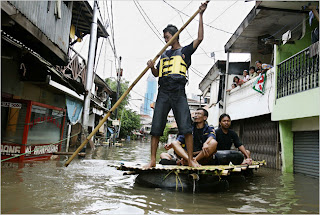Honeybees Vanish, Leaving Keepers in Peril

David Bradshaw has endured countless stings during his life as a beekeeper, but he got the shock of his career when he opened his boxes last month and found half of his 100 million bees missing.
In 24 states throughout the country, beekeepers have gone through similar shocks as their bees have been disappearing inexplicably at an alarming rate, threatening not only their livelihoods but also the production of numerous crops, including California almonds, one of the nation’s most profitable.
“I have never seen anything like it,” Mr. Bradshaw, 50, said from an almond orchard here beginning to bloom. “Box after box after box are just empty. There’s nobody home.”
 The sudden mysterious losses are highlighting the critical link that honeybees play in the long chain that gets fruit and vegetables to supermarkets and dinner tables across the country.
The sudden mysterious losses are highlighting the critical link that honeybees play in the long chain that gets fruit and vegetables to supermarkets and dinner tables across the country.Beekeepers have fought regional bee crises before, but this is the first national affliction.
 Now, in a mystery worthy of Agatha Christie, bees are flying off in search of pollen and nectar and simply never returning to their colonies. And nobody knows why. Researchers say the bees are presumably dying in the fields, perhaps becoming exhausted or simply disoriented and eventually falling victim to the cold.
Now, in a mystery worthy of Agatha Christie, bees are flying off in search of pollen and nectar and simply never returning to their colonies. And nobody knows why. Researchers say the bees are presumably dying in the fields, perhaps becoming exhausted or simply disoriented and eventually falling victim to the cold.As researchers scramble to find answers to the syndrome they have decided to call “colony collapse disorder,” growers are becoming openly nervous about the capability of the commercial bee industry to meet the growing demand for bees to pollinate dozens of crops, from almonds to avocados to kiwis.
from the NY Times
























